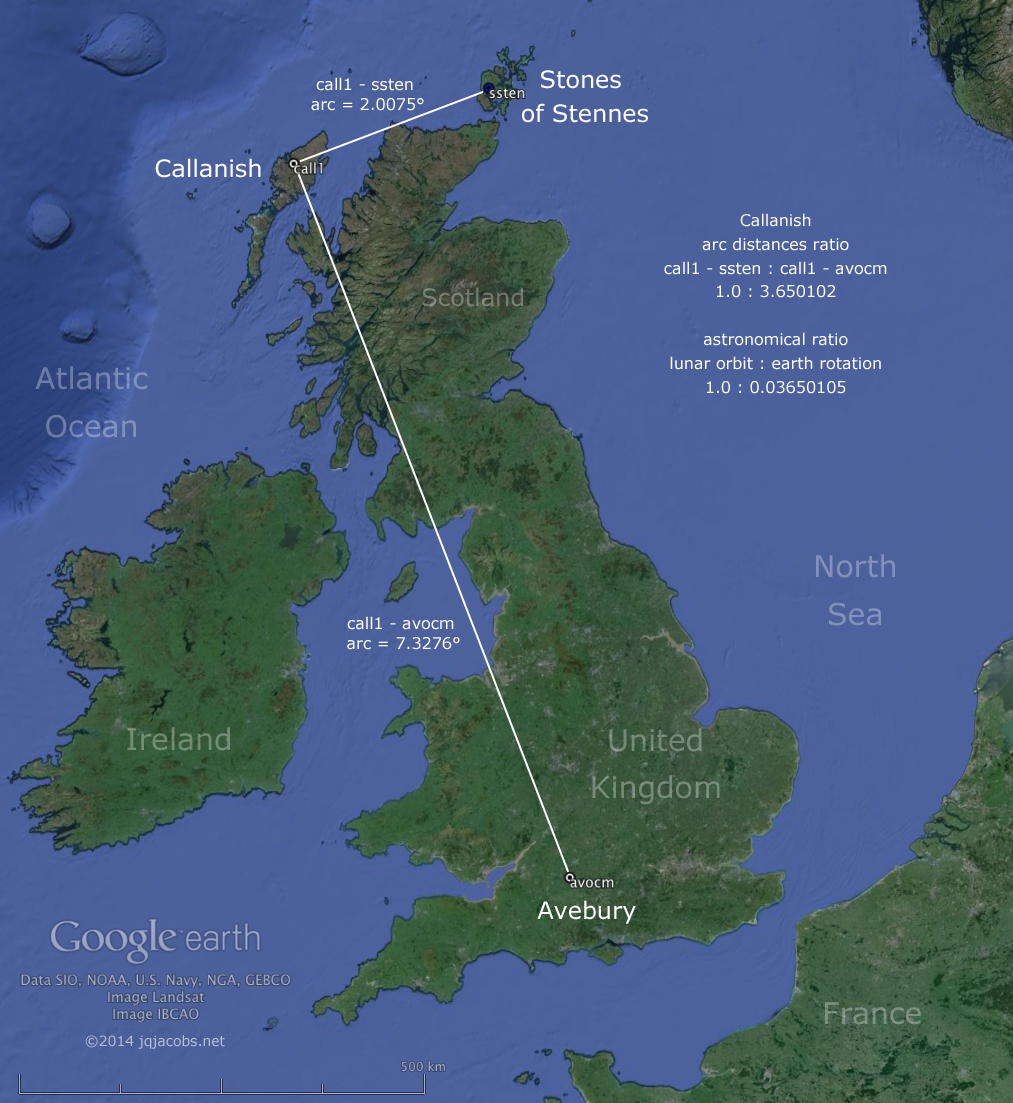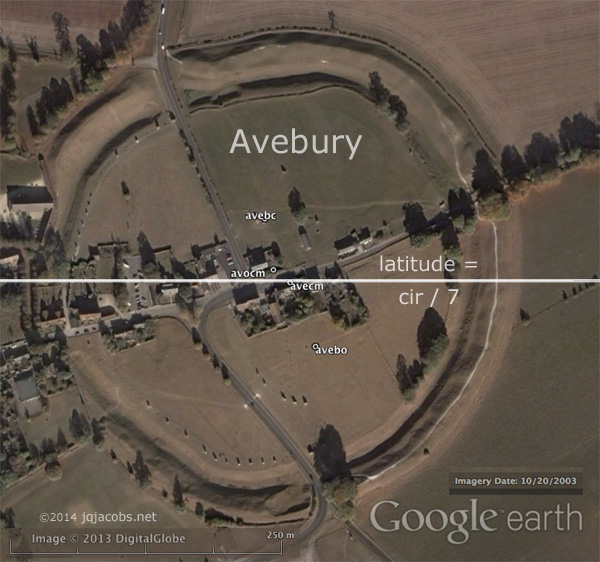
The Heart of Neolithic Orkney
2014.08.24 - The Heart of Neolithic Orkney placemarks file for Google Earth contains placemarks for the major sites with selected Panoramio photos and, illustrated with tesselated lines between sites, some selected study results. The most interesting result, especially in the context of the Stonehenge and Pi finding, is depicted in the image below.

Click image for a larger view.
Download The Heart of Neolithic Orkney placemarks file at this URL: http://www.jqjacobs.net/kml/orkney.kml
More archaeology placemarks: Ancient Monument Placemarks
Regarding the data points for Avebury, the site code 'avecm' is Avebury Circles, the mean of the monument centerpoints of the two inner stone circles. Data code 'avocm' is a coordinate resulting from the mean of the 98 standing stones in the large Avebury circle, about a 20 meter difference in coordinates on the ground. Utilizing avocm to represent the Avebury Circle latitude and longitude results in the ratio being accurate to a fraction of a meter instead of having an under five meter error.

In comparison with the Stonehenge and Pi finding, the Callanish-Orkney arc is far longer than the Avebury-Stonehenge arc (which expresses the ratio 1.0 : 10 pi in relation to the Stonehenge to Ring of Brodgar arc). With longer arc distances, far greater accuracy expressing a pre-determined ratio is possible with the same distance error margin of monument placements. This proportional advantage is useful both to the assumed Neolithic builders and the researcher. Expressing the actual astronomical ratio, 1.0 : 0.0365010, would not have this advantage. The ratio 1.0 : 0.0365010 is nonetheless expressed by three Orkney monuments. The ratios posted in the placemarks results folder include two Orkney monuments expressing two different 1.0 : pi ratios. If you cannot open Google Earth files, any KML file will also open as a text files with markup.
All this means nothing, of course, without the assumption of intentional Neolithic construction expressing the most fundamental observable astronomical ratio on the scale of the British Isles and all that that implies about surveying and precise scientific astronomy. Also, the results do not express margins of error in the method employed to determine coordinates. Those margins of error are greater at each data point than the resulting ratio is inaccurate (accuracy is within 5 meters for the 2.0075° call1-ssten arc given call1-avecm as the other arc). For intra-site considerations with sites as close to each other as the Ring of Brodgar and the Stones of Stennes, the proportion of the margin of error to total arc distance is significant. Precision is essential for intra-site study because the builders could achieve direct measure. My results can be tested with better methods, and the closer the two sites to each other, the better the methods required.
What I need now is reliable GPS survey data and testing of such GPS coordinates. Any chance we can crowd source this? Please contact me if you have the data. Meanwhile, let's not get overly excited about the implications. This is not a permalinked post, but I'm excited and I'll admit, I'm not revealing the whole story...yet. If this is the only part of the story you have so far, continue reading this blog and domain for far more about ancient geodesy, astronomy, and archaeology.

|